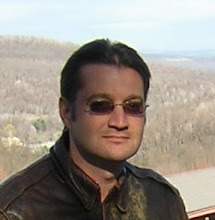There were approximately 30 people at the “emergency” meeting which was called because of several pending executions. Gov. Ehrlich signed a death warrant for Wesley Baker for the week of December 5th and a death warrant is likely to be signed for Vernon Evans soon with a possible execution date in early 2006. Crips founder Stan “Tookie” Williams is also scheduled to be executed in California on December 13th. Attendees at the meeting included family and friends of Baker and Evans, people from Amnesty International, the National Socialists, students from Goucher College and members of the public. Emotions were high at the meeting with increasing inflammatory rhetoric about “making noise” to try and stop the executions.
Intelligence indicates that attendance at the below listed events is likely to be large with some events drawing several hundred people. Information about the events is being widely posted on the Internet, at many college campuses, in area churches and through leafleting sessions around the state. Although most death penalty protests in the past have not been violent, the potential for disruptions and problems continue to exist due to the strong emotions the issue illicit from people on both sides of the debate. Members of the family of Baker’s and Evans’ victims have not been outspoken in the past about either their support or anti-death penalty feelings.

Finally, eight months of hard work by the Secret Police would pay off. The anti-death penalty activists were set to launch possibly violent protests and the spies had a list of them. To date, the spies had put in 144 hours of investigative work. They had attended 17 events and meetings on a covert basis, using secret email accounts and false identities. At last they were poised to jail Max Obuszewski and his socialist allies once and for all.
Unfortunately for the spies, the protests would happen but the violence would not. At a November rally outside the Governor’s Mansion, the spies reported, “There were no disturbances at the protest and no problems were detected by the covert troopers. The protestors left the scene without incident."

At a November meeting held to discuss plans for Wesley Baker’s execution, the spies reported, “No plans were discussed at this meeting to cause any civil disruptions during the run-up or during the week that Baker is scheduled to be executed.”
At a December rally at Supermax, the spies wrote, “There were at least 100 people at the protest which lasted approximately 1 ½ hours. The group held signs and marched in circle in front of Central Booking before walking around the prison and then ending with speeches by activists and politicians who are against the death penalty. Traffic was not disrupted and no protestors caused any problems.”
All told, the Secret Police attended seven meetings and five rallies between November 2005 and May 2006. They found no violence, no disruptions and no illegal activity of any kind. The file does not state why the investigation ultimately ceased, but it may have been due to simple boredom. The spies attended 28 different events and invested 288 hours of time with no return.
The 46-page file from the hidden vaults of the Secret Police generates more questions than answers. We will ask those questions in Part Four.


No comments:
Post a Comment